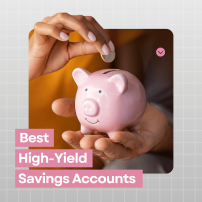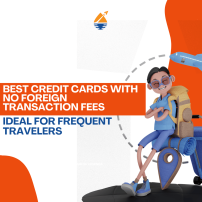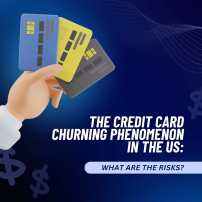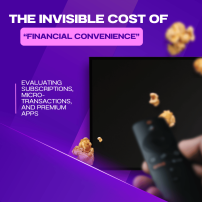0% APR Credit Cards: How to Take Advantage and What Traps to Avoid

Advertisements
In the competitive landscape of U.S. personal finance, 0% APR credit cards stand out as a highly attractive offer.
These cards promise a period where you pay no interest on new purchases, balance transfers, or sometimes both.
It sounds almost too good to be true, and while these cards can be incredibly useful tools for saving money or managing debt, they come with a distinct set of rules and potential pitfalls.
This comprehensive guide will help you understand how to leverage 0% APR offers effectively, ensuring you maximize the benefits while sidestepping the common traps that can lead to unexpected costs.
What Exactly is a 0% APR Credit Card?
APR stands for Annual Percentage Rate, which is the yearly interest rate you pay on your credit card balance.
A 0% APR credit card means that for a specific promotional period—typically ranging from 6 to 21 months—you won’t be charged any interest on qualifying transactions.
There are generally two main types of 0% APR offers:
0% APR on Purchases: This is ideal if you plan to make a large purchase (like an appliance or medical bill) and want to pay it off over time without incurring interest.
0% APR on Balance Transfers: This is designed for individuals who have existing high-interest credit card debt. You can transfer that debt to the new card and pay it down interest-free for the promotional period.
0% APR on Both: Some cards offer promotional rates on both purchases and balance transfers, providing maximum flexibility.
Once the promotional period ends, any remaining balance will be subject to the card’s standard variable APR, which can be quite high (often 18% to 29% or more).
How to Strategically Use 0% APR Credit Cards
When used correctly, a 0% APR card can be a powerful financial tool. Here are the best scenarios and strategies:
Debt Consolidation and Balance Transfers
This is perhaps the most popular and impactful use. If you have high-interest credit card debt, transferring it to a 0% APR card can be a game-changer.
Strategy: Find a card with a long 0% APR balance transfer period (e.g., 15-21 months). Calculate how much you need to pay each month to pay off the entire transferred balance before the promotional period ends. Stick to this payment plan rigorously. This can save you hundreds, even thousands, in interest.
Example: You have a $5,000 balance at 20% APR. Transferring it to a 0% APR card for 15 months means you need to pay $333.33 each month ($5,000 / 15) to be debt-free before interest kicks in. Without the 0% APR, you’d be paying significant interest on top of your principal.
Financing a Large Purchase
If you need to buy something significant but don’t have the cash immediately, a 0% APR card can act like a short-term, interest-free loan.
Strategy: Only use this for planned, necessary purchases that you are certain you can pay off within the promotional period. Divide the purchase amount by the number of interest-free months to determine your monthly payment goal. Avoid using it for impulse buys.
Example: You need a new refrigerator costing $1,200. With a 0% APR for 12 months, you’d pay $100 a month. This is far better than using a personal loan with interest or paying interest on a regular credit card.
Creating a “Payment Buffer” or Emergency Fund
For extremely disciplined individuals, a 0% APR card can serve as a backup for unexpected emergencies.
Strategy: Instead of spending from the card for an emergency, you might put other planned expenses on the card and use the cash you would have spent to build up your emergency savings account. This is a very advanced tactic and requires extreme financial discipline. It is generally safer to build a cash emergency fund.
Maximizing Rewards (with caution)
Some 0% APR cards also offer attractive sign-up bonuses or cash back rewards.
Strategy: Use the card for your regular, budgeted spending to meet the minimum spend requirement for the bonus. Always pay off these purchases in full by the due date. The 0% APR is a bonus, but the primary goal should still be avoiding interest.
Key Traps to Avoid with 0% APR Credit Cards
While beneficial, 0% APR cards are often designed with traps for the unwary. Being aware of these is crucial.
The “Deferred Interest” Trap (Retail Store Cards)
This is perhaps the most dangerous pitfall. Many retail store credit cards or financing offers (e.g., “0% APR for 12 months on your new furniture”) use deferred interest.
How it works: If you don’t pay off the entire balance by the end of the promotional period, all the interest that was deferred from the original purchase date will be retroactively charged to your account. This can amount to hundreds or thousands of dollars in sudden interest charges.
How to avoid: Always read the fine print. Ensure it’s a true 0% APR offer and not deferred interest. If it is deferred interest, you must pay the full balance on time.
Not Paying Off the Balance Before the Promotional Period Ends
This is the most common mistake with true 0% APR cards.
Consequence: When the 0% period expires, any remaining balance immediately starts accruing interest at the card’s standard (and often high) variable APR. This can quickly negate any initial savings.
How to avoid
Calculate your monthly payment: Divide the total balance you need to pay off by the number of months in the promotional period.
Set up reminders: Mark the end date of your promotional period on your calendar.
Automate payments: Set up automatic payments to ensure you hit your monthly target.
The Balance Transfer Fee
Most balance transfer offers come with a balance transfer fee, typically 3% to 5% of the amount transferred.
Consequence: This fee reduces your savings. Transferring $5,000 with a 3% fee means you pay $150 upfront.
How to avoid: Factor this fee into your calculations. Even with the fee, a 0% APR balance transfer is usually cheaper than paying high interest for months, but it’s an important cost to acknowledge. Some rare cards offer 0% balance transfers with no fee, but they usually have shorter promotional periods.
New Purchases During a Balance Transfer Period
If you transfer a balance and then use the same card for new purchases, your payments might be applied to the lowest APR balance first (which is your 0% APR transferred balance).
Consequence: This means your new purchases start accruing interest immediately at the regular high APR, as your payments aren’t touching them. This is often called the “payment allocation” trap.
How to avoid: It’s best to avoid making new purchases on a card used for a balance transfer. If you must, use a different credit card for new spending that you pay off in full monthly.
0% APR credit cards offer a fantastic opportunity to save money on interest, whether you’re consolidating debt or financing a significant purchase.
They are not a magic solution to financial problems, but rather a powerful financial tool that demands discipline and careful planning.
By understanding how they work, strategically leveraging their benefits, and diligently avoiding the common traps like deferred interest and missed payments, you can use these cards to significantly improve your financial standing.
Always read the fine print, create a solid repayment plan, and prioritize paying off your balance before the interest-free period expires.
Do that, and you’ll be well on your way to mastering the art of responsible credit card use.
Related content

Best Personal Loan Platforms in the US (2025 Edition): SoFi, Upstart, Marcus & More

Best High-Yield Savings Accounts in the US in 2025

Best Credit Cards with No Foreign Transaction Fees: Ideal for Frequent Travelers

The Credit Card Churning Phenomenon in the US: Is It Legal? Is It Worth It? What Are the Risks?

The Complete Beginner’s Guide: How to Use Your First Credit Card in the US Responsibly
